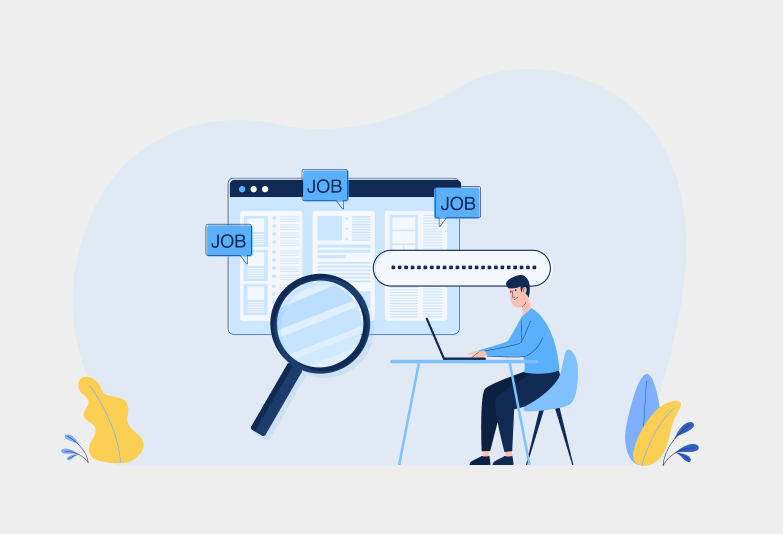“Can you hear me?”
“I’m sorry, I didn’t quite get that.”
“Kindly mute yourselves.”
“Why can’t I see you? Isn’t your video working?”
These are some phrases heard through the recent months as the world attempted to adapt to the safety guidelines given to fight COVID-19. As the world opens up to reduce the number of virtual meetings you need to attend, this form of digital communication will likely be a permanent part of life.
While video interviews have been there for the longest time, the idea of having one seemed impossible and difficult to implement for some people. With the reality kicking in that technology could go a long way in the hiring process, this is one of the many changes that recruiters and hiring managers are likely to implement. As such, it is crucial to debunk some of the myths that you might have heard about video interviews.
Here are some of the most common video interview myths.
1. It has to be live.
Live interviews are a hub for anxiety. There is a lot of pressure to instantly have all the answers, which discourages many people from applying for jobs once they know there will be a dedicated video interview. Although some candidates will want to interact with you live, others will want to meet you through a brief video introduction.
In such instances, you will need to record a video asking pre-specified questions. These questions might include:
- Why are you the ideal candidate?
- Why do you want to work in that position?
- What your motivation is, or what you believe in when it comes to your career?
2. You don’t have to worry; it’s like a regular video chat platforms.
Video interviews are more complicated than a video conversation with a friend or family. It is easy to dismiss the process’s seriousness, especially if you are used to having video calls. But, we advise you not to. As a recruiter, you should be focused on assessing your candidates’ eligibility for a position, just the way it happens during face to face interviews.
Thus, you should ensure that you prepare adequately. If this is your first video interview, you should research how to ask the right questions and implement all the tips you can. Ensure to adhere to the idea of professionalism and formality as they will speak on who you are as a hire.
3. It is impersonal.
The third myth in the list of video interview myths is that it is impersonal. Job seekers assume that the recruiter will ask similar questions to all the candidates they interview, making it impossible to add a personal perspective to anything they are asked. While it is likely that you will have a list of questions, it is easy to add your voice to the questions.
Video interviews have room for exploring responses further, especially when the candidate finds something intriguing. Their focus is on you and what your company has to offer, and they will be interested in what you say.
4. You need to understand technology.
You need not be tech-savvy to conduct a video interview. Although you will need some basic knowledge on how to access a meeting platform, everything else is pretty straight forward after that.
Ensure that you have all the necessary tools and test if they are working. Once that is done, you are ready for your interview. With the increase in video interview platforms and resources, there is diversity on choice platforms. This means that you can find one that works best for your industry.
5. Always prepare for connection issues.
Technology has a way of frustrating you when you are in a hurry. Encountering these issues during an interview might discourage the recruiter from proceeding with your interview process. The prospect of this happening scares applicants, and rightfully so.
The best way to ensure that you do not experience technical issues is to pre-check your devices. Fix camera problemsOne common issue that interviewees face is having a camera that is not functioning properly. To avoid this, check your camera in advance and make sure it’s working properly. If not, consider using an external camera or fixing the internal one before the interview. You should also ensure that you have stable internet connectivity. This will alleviate most of your concerns. Additionally, it would be best if you looking for a reliable interview platform that supports recorded video interviews.
6. Video interviews are only ideal for candidates who live far.
Seeking employment can be costly, especially if your candidates have to go for an in-person interview in every company they apply to. Phone interviews or video interviews help you reduce cost, time, and hassle for both, you and your candidates. This makes them alluring to people living far, but they are also great for those who do not.
Most recruiters find that video interviews are fast, which makes it easier to find the right hire. This makes them a convenient method despite the location of an interviewee. It also speeds up your recruitment processes.
7. They are different from in-person interviews.
The most significant variations of in-person and video interviews have to do with time, money, and physical presence. In essence, every other aspect of an interview remains relevant. You prepare questions in advance, and the candidates need to do the same for responses.
It is crucial to treat virtual interviews with the same regard as in-person ones by showing up early and asking questions. Etiquette and conduct are also under analysis, so practice turns in video interviews without interrupting, dressing well, and paying attention.
8. You might make assumptions about your candidates.
The next one in the video interview myths is that you make assumptions about your candidates. Every recruiter and candidate on a video interview hopes that things move smoothly. However, you might find your candidate looking for an answer or struggling with technical issues. Most candidates are afraid that such problems will affect your perception of them.
Remember that your candidates’ qualifications speak for them more than a few glitches. Do your best, apologize where there are missteps, and hope for the best.
9. They promote discrimination.
Sometimes, your candidates might be a victim of unconscious discrimination, and there is little you can do about that since it is up to you to fix that. However, the Equal Employment Opportunity Commission has devised ways to ensure video interviews are as fair and unbiased as in-person ones.
You should ensure that you are compliant with the regulations, and your candidates’ qualifications will determine whether they get the job or not. You prepare for the interview and understand the job description and specifications very well.
10. Video interviews are only used for high-volume hiring.
The last one in the list of video interview myths is that it can be used only for high-volume hiring. The greatest convenience of video interviews is that they save time. This allows you to go through many applicants in a short period. This, in turn, allows you to find the ideal candidate easily.
Sometimes, however, one vacant position might require filling, and the process is less intense. If there are not active advertisements on the available job, few people apply. In such cases, a video interview allows the employer to incorporate the process into their schedule without disrupting their days. You can sign up for Jobsoid Video Interviews and streamline your video interviewing process.

 Alex C. Porter
Alex C. Porter 

